-
 bitcoin
bitcoin $122090.672462 USD
1.59% -
 ethereum
ethereum $4493.758974 USD
0.56% -
 xrp
xrp $3.033145 USD
0.65% -
 tether
tether $1.000629 USD
0.00% -
 bnb
bnb $1169.854250 USD
7.07% -
 solana
solana $230.954786 USD
-0.19% -
 usd-coin
usd-coin $0.999785 USD
0.00% -
 dogecoin
dogecoin $0.256108 USD
-1.12% -
 tron
tron $0.342333 USD
-0.12% -
 cardano
cardano $0.859632 USD
-0.10% -
 hyperliquid
hyperliquid $48.932146 USD
-2.25% -
 chainlink
chainlink $22.345466 USD
-1.29% -
 ethena-usde
ethena-usde $1.000217 USD
-0.03% -
 avalanche
avalanche $31.203456 USD
1.93% -
 sui
sui $3.579145 USD
1.05%
How to fix "nonce too low" error in MetaMask?
The "nonce too low" error in MetaMask occurs when a transaction uses a nonce already used or lower than the last one, causing rejection by the Ethereum network.
Jul 10, 2025 at 09:21 pm
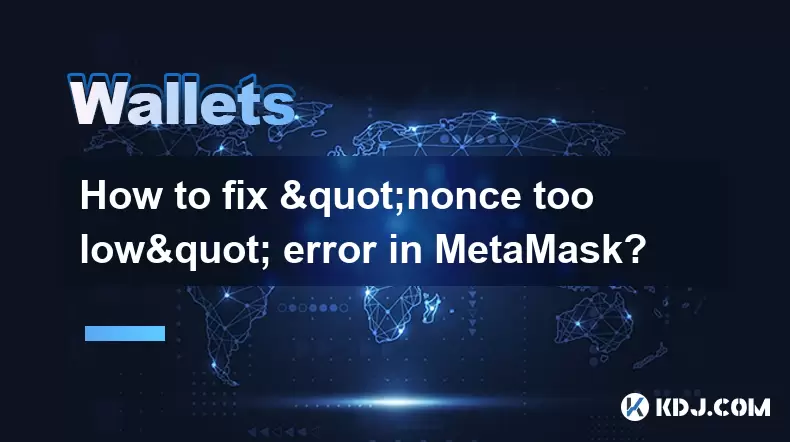
Understanding the 'Nonce Too Low' Error in MetaMask
When using MetaMask, a popular Ethereum wallet, users may occasionally encounter transaction errors such as 'nonce too low'. This error typically occurs during blockchain transactions and is tied to how Ethereum manages transaction sequencing through a value known as the nonce.
The nonce is a counter that keeps track of the number of transactions sent from a specific Ethereum address. Each time you send a transaction, the nonce increases by one. If a new transaction is submitted with a nonce lower than or equal to a previously used one, the network rejects it to prevent duplicate or malicious activity.
Causes Behind the 'Nonce Too Low' Issue
One common scenario where this error arises is when multiple transactions are sent in quick succession without waiting for confirmations. Since MetaMask auto-increments the nonce, sending another transaction before the previous one is mined can lead to conflicts.
Another possible cause involves manually setting a custom nonce in MetaMask's advanced settings and choosing a value that has already been used. This manual override bypasses MetaMask’s automatic handling, which can result in incorrect nonce values being submitted.
Additionally, if you're interacting with decentralized applications (dApps) or scripts that submit transactions programmatically, they might not properly synchronize nonces with your wallet, leading to mismatches.
Steps to Resolve the 'Nonce Too Low' Error
To resolve this issue, follow these detailed steps:
- Open MetaMask and navigate to the Activity tab.
- Identify the last confirmed transaction to determine the current nonce value associated with your account.
- If there are pending transactions stuck due to the error, click on them and select Speed Up or Cancel depending on whether you want to replace or discard the transaction.
- If you’re submitting a new transaction manually, switch to Advanced Gas Controls and ensure that the Nonce field reflects the correct next number.
- If necessary, increase the gas price to help the transaction get picked up faster by miners.
These actions will help align your transaction sequence with what the Ethereum network expects.
Using Custom Nonce Settings Safely
If you must use a custom nonce, proceed with caution. Only experienced developers or advanced users should manually adjust this parameter. To do so safely:
- Monitor all outgoing transactions from your wallet using block explorers like Etherscan.
- Keep a log of every transaction’s nonce to avoid duplicates.
- When preparing a new transaction in MetaMask, open the Advanced Gas Settings and input a nonce higher than the most recent one.
- Ensure no other transactions are being sent simultaneously from the same wallet.
Manually managing nonces can be risky but is sometimes necessary for debugging or batched transaction submissions.
Clearing Stuck Transactions Caused by Incorrect Nonces
If you've already submitted a transaction with an incorrect nonce and it's stuck, here’s how to clear it:
- Go to the Activity tab in MetaMask and locate the problematic transaction.
- Click on Details, then choose either Speed Up or Cancel.
- Choosing Speed Up submits a new transaction with the same nonce but a higher gas fee to incentivize quicker mining.
- Selecting Cancel sends a zero-value transaction with the same nonce and a higher gas fee to override the original one.
- Wait for the replacement transaction to be confirmed on the blockchain.
- Verify via Etherscan that the new transaction has replaced the old one and that the nonce count is now accurate.
This process helps reset your transaction queue and ensures future transactions proceed smoothly.
Preventing Future Occurrences of 'Nonce Too Low'
To avoid encountering the 'nonce too low' error again, consider implementing preventive practices:
- Avoid sending multiple transactions rapidly without waiting for confirmations.
- Refrain from manually editing nonce values unless absolutely necessary.
- Use reliable dApps and scripts that handle nonce management correctly.
- Regularly check your transaction history using tools like Etherscan to monitor nonce progression.
- Enable MetaMask notifications to stay informed about transaction statuses in real-time.
Adopting these habits minimizes the risk of transaction failures caused by nonce mismatches.
Frequently Asked Questions
What is a nonce in Ethereum?A nonce in Ethereum is a sequential number assigned to each transaction sent from an account. It ensures transactions are processed in the correct order and prevents replay attacks.
Can I reuse a nonce once a transaction is canceled?No. Once a transaction with a specific nonce is submitted to the network—whether canceled or successful—the next transaction must use a higher nonce value.
How does MetaMask determine the next nonce automatically?MetaMask queries the Ethereum network to find the latest nonce value for your account based on confirmed transactions, then increments it by one for the next submission.
Is it safe to speed up a transaction with a low nonce?Yes, provided you don’t have conflicting transactions in the mempool. Using the Speed Up feature allows you to replace a slow transaction with one offering a higher gas fee.
Disclaimer:info@kdj.com
The information provided is not trading advice. kdj.com does not assume any responsibility for any investments made based on the information provided in this article. Cryptocurrencies are highly volatile and it is highly recommended that you invest with caution after thorough research!
If you believe that the content used on this website infringes your copyright, please contact us immediately (info@kdj.com) and we will delete it promptly.
- BlockDAG, DOGE, HYPE Sponsorship: Crypto Trends Shaping 2025
- 2025-10-01 00:25:13
- Deutsche Börse and Circle: A StableCoin Adoption Powerhouse in Europe
- 2025-10-01 00:25:13
- BlockDAG's Presale Buzz: Is It the Crypto to Watch in October 2025?
- 2025-10-01 00:30:13
- Bitcoin, Crypto, and IQ: When Genius Meets Digital Gold?
- 2025-10-01 00:30:13
- Stablecoins, American Innovation, and Wallet Tokens: The Next Frontier
- 2025-10-01 00:35:12
- NBU, Coins, and Crypto in Ukraine: A New Yorker's Take
- 2025-10-01 00:45:14
Related knowledge
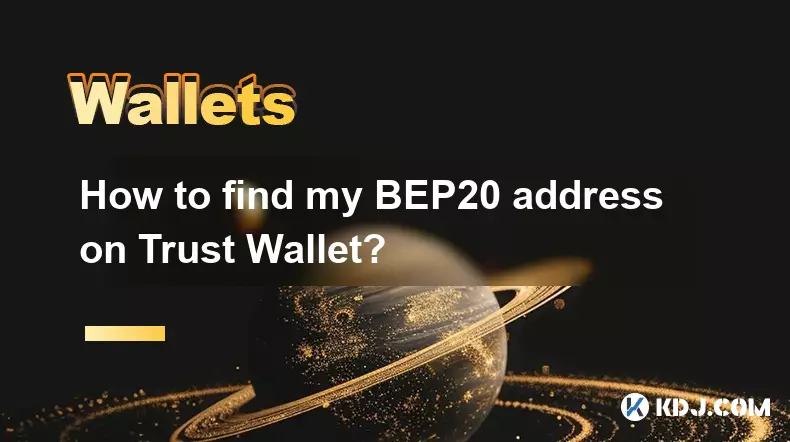
How to find my BEP20 address on Trust Wallet?
Oct 04,2025 at 06:19pm
Understanding BEP20 and Trust Wallet Compatibility1. Trust Wallet is a widely used cryptocurrency wallet that supports multiple blockchain networks, i...
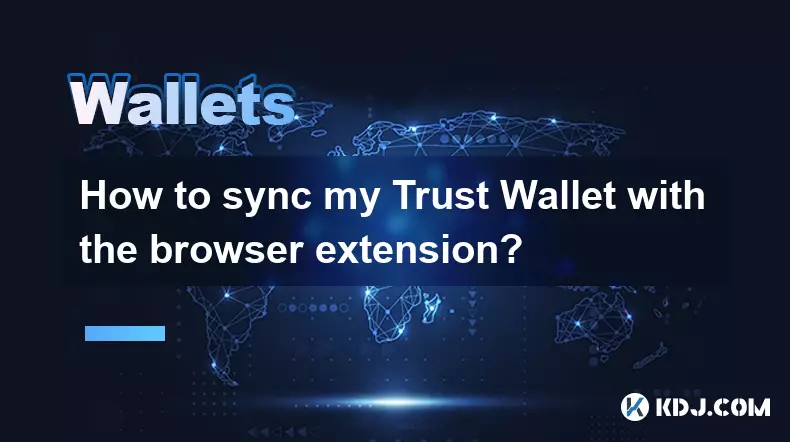
How to sync my Trust Wallet with the browser extension?
Oct 03,2025 at 06:19pm
Understanding Trust Wallet and Browser Extension IntegrationTrust Wallet is a popular non-custodial cryptocurrency wallet that supports a wide range o...
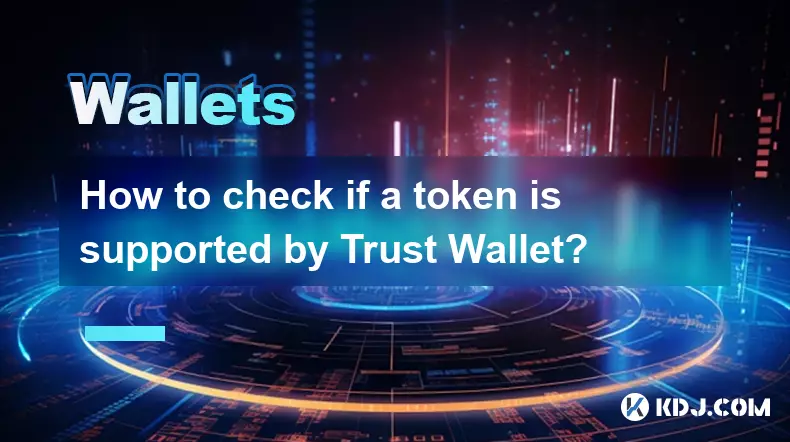
How to check if a token is supported by Trust Wallet?
Oct 04,2025 at 05:18am
Understanding Token Compatibility with Trust Wallet1. Trust Wallet supports a wide range of blockchain networks, including Ethereum, Binance Smart Cha...

How to get the Trust Wallet browser extension?
Oct 01,2025 at 12:37am
How to Access the Trust Wallet Browser Extension1. Visit the official Trust Wallet website through a secure internet connection. Navigate to the downl...

How to interact with a DApp using Trust Wallet?
Oct 02,2025 at 10:00pm
Connecting Trust Wallet to a DApp1. Open the Trust Wallet app on your mobile device and ensure your wallet is unlocked with access to your assets. Nav...
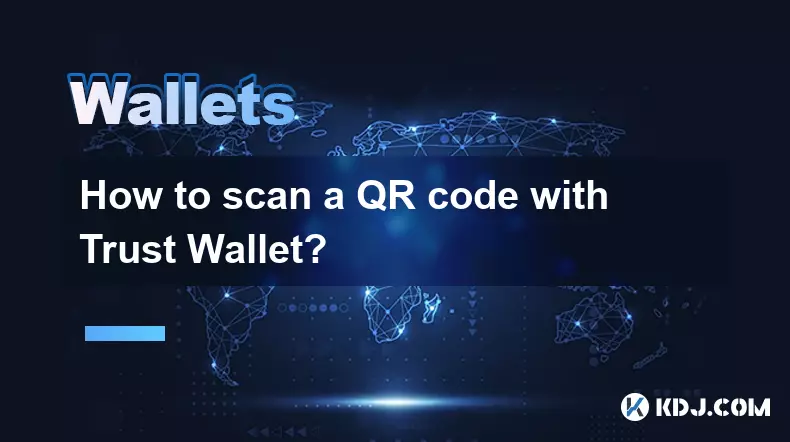
How to scan a QR code with Trust Wallet?
Oct 02,2025 at 03:37pm
Understanding QR Codes in Trust Wallet1. QR codes are widely used in cryptocurrency applications to simplify transaction processes. Trust Wallet lever...

How to find my BEP20 address on Trust Wallet?
Oct 04,2025 at 06:19pm
Understanding BEP20 and Trust Wallet Compatibility1. Trust Wallet is a widely used cryptocurrency wallet that supports multiple blockchain networks, i...

How to sync my Trust Wallet with the browser extension?
Oct 03,2025 at 06:19pm
Understanding Trust Wallet and Browser Extension IntegrationTrust Wallet is a popular non-custodial cryptocurrency wallet that supports a wide range o...

How to check if a token is supported by Trust Wallet?
Oct 04,2025 at 05:18am
Understanding Token Compatibility with Trust Wallet1. Trust Wallet supports a wide range of blockchain networks, including Ethereum, Binance Smart Cha...

How to get the Trust Wallet browser extension?
Oct 01,2025 at 12:37am
How to Access the Trust Wallet Browser Extension1. Visit the official Trust Wallet website through a secure internet connection. Navigate to the downl...

How to interact with a DApp using Trust Wallet?
Oct 02,2025 at 10:00pm
Connecting Trust Wallet to a DApp1. Open the Trust Wallet app on your mobile device and ensure your wallet is unlocked with access to your assets. Nav...

How to scan a QR code with Trust Wallet?
Oct 02,2025 at 03:37pm
Understanding QR Codes in Trust Wallet1. QR codes are widely used in cryptocurrency applications to simplify transaction processes. Trust Wallet lever...
See all articles










































































